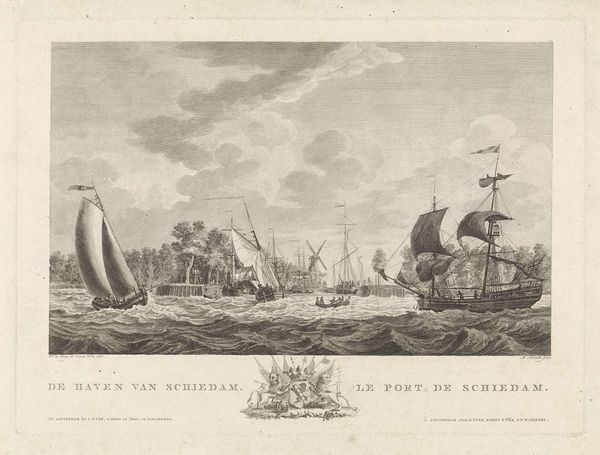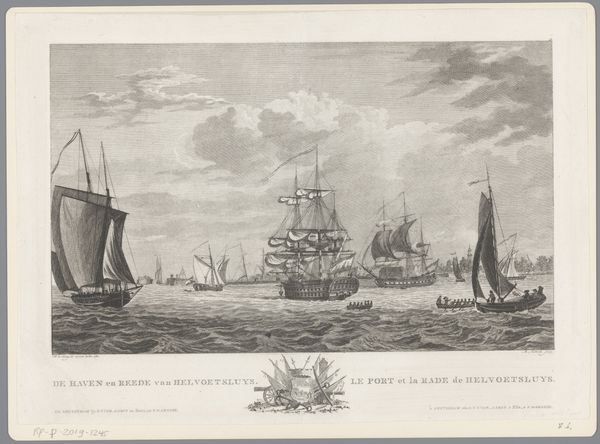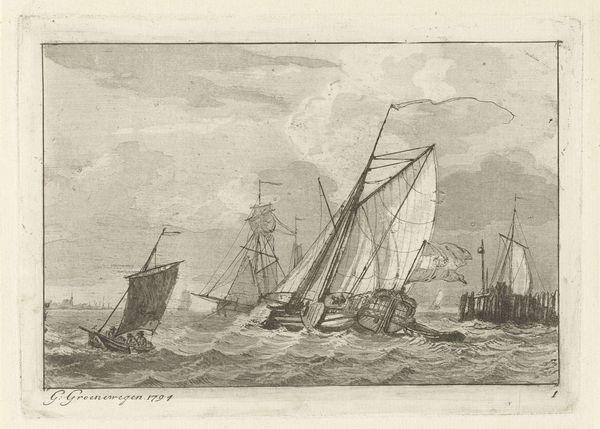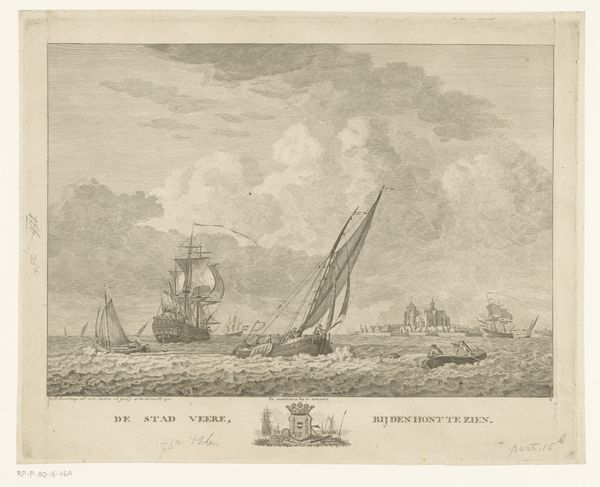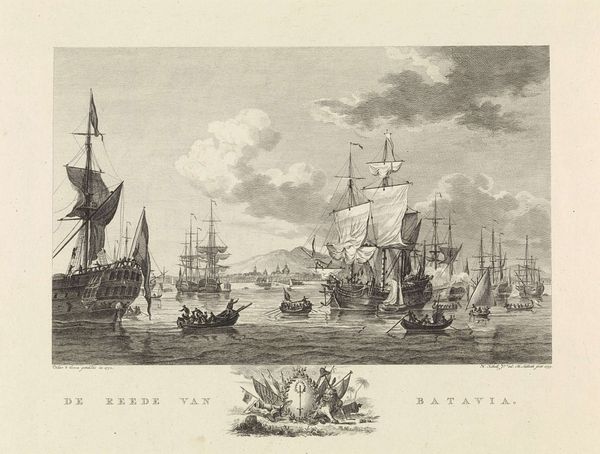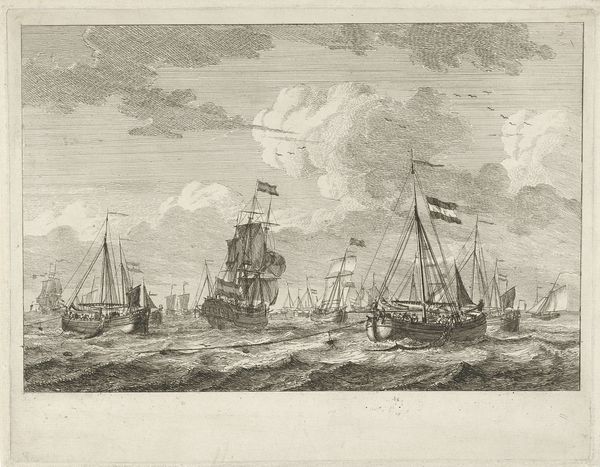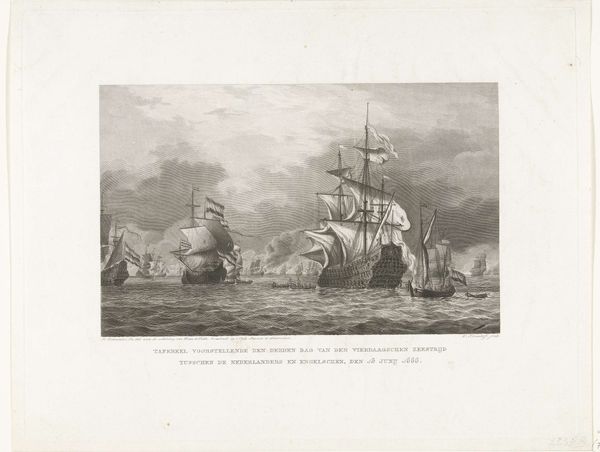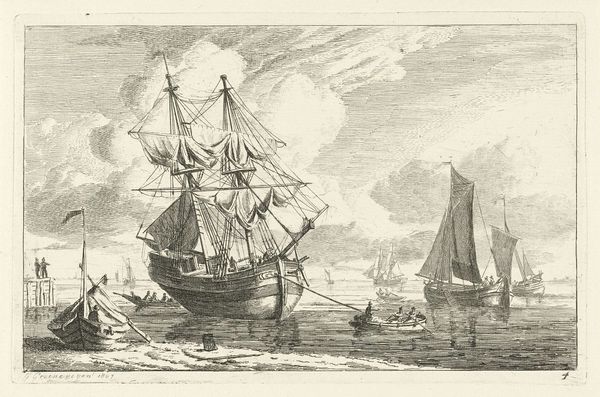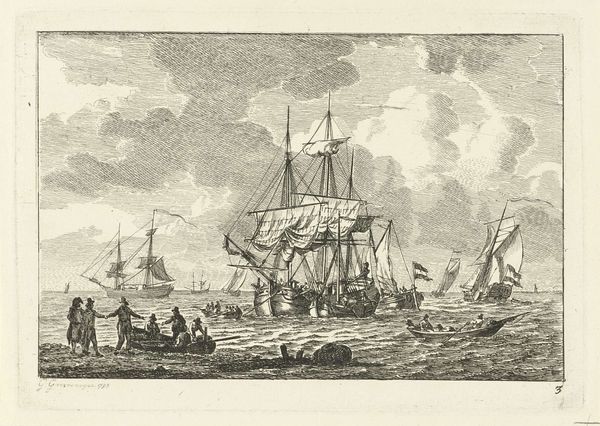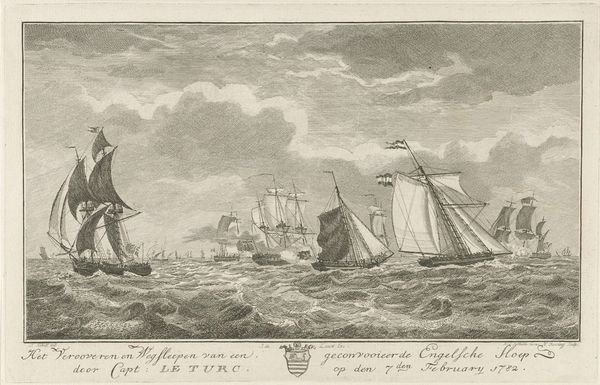
Dimensions: height 281 mm, width 390 mm
Copyright: Rijks Museum: Open Domain
Curator: This engraving by Mathias de Sallieth, titled "Gezicht op de Nieuwe Haven van Texel," created sometime between 1781 and 1787, offers a fascinating glimpse into the maritime activities of the time. It's currently held in the Rijksmuseum. Editor: The texture of the water seems to have a life of its own. Even in black and white, it is an action scene of maritime commerce. What’s immediately noticeable to me is the high degree of detail; one could get lost in those meticulously etched lines. Curator: Indeed. De Sallieth masterfully uses engraving techniques to portray both the grandeur of the ships and the somewhat busy atmosphere of the harbor. There is, as well, a conscious awareness to give political significance to international sea trade via its composition. Editor: I concur. Note, too, how the composition emphasizes not just the boats themselves, but, more deeply, their interactions within a defined maritime ecosystem. It becomes clear what is emphasized; through lines and patterns we appreciate how Dutch prosperity during this period depended on activities out at sea. Curator: That contextual backdrop—Texel's crucial role in maritime trade—is key. The work isn’t only concerned with the visuals. During this period, naval power was pivotal for maintaining trade routes. This image also underscores Dutch commercial dominance through a depiction that subtly conveys naval capabilities. Editor: Absolutely, we also can consider the iconography that is being depicted. If we dive into a close reading of each component—sails, rigging, hull design—we begin to appreciate this as being more than just art, and begin viewing it as a statement in regards to geopolitical status. The sails full with wind are not simply elements of landscape; rather, these represent energy and an implicit potential that comes with sea power. Curator: I appreciate you mentioning that point about status. While the scene portrays maritime trade, one must keep in mind that maritime activity wasn't all economic and smooth. Pirates existed. Navies patrolled to enforce the law of trade as their respective country wanted it enforced. I suspect it wasn't quite as clean as what this depicts. Editor: And it invites reflection. I walk away struck by the intersection of history and artistic method—a testament, if ever one were needed, of an artwork's power to serve more than one function. It makes you realize that not just art matters; context and time matter, too. Curator: Well said. I agree that examining any piece within its appropriate socio-political framework elevates not just the piece, but the ability to see clearly into eras far removed from our own.
Comments
No comments
Be the first to comment and join the conversation on the ultimate creative platform.
